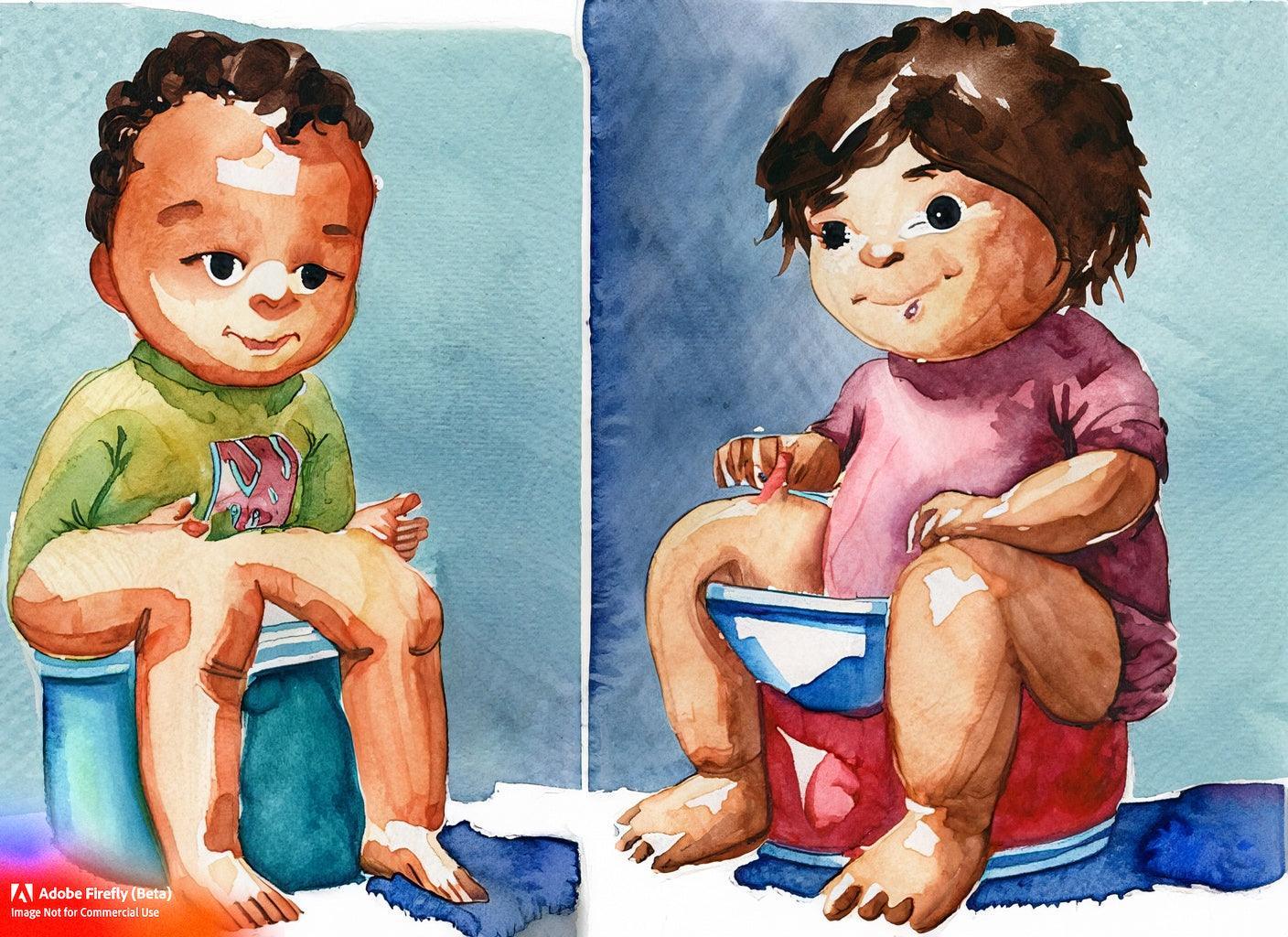Potty training is an exciting milestone for parents and children alike. However, the experience can be different depending on whether you're potty training a boy or a girl. While the end goal is the same, there are unique challenges and considerations for each gender. In this article, we'll explore the differences between potty training boys and girls, and give you practical tips to make the process smoother for everyone involved.
** View all parenting books online from 4aKid
Boys vs. Girls: The Main Differences in Potty Training
Boys and girls have different anatomy, which means they will approach potty training differently. Here are some of the main differences to keep in mind:
- Boys need to learn to aim: Boys have to learn how to aim their pee into the toilet or potty chair, which can be tricky. They may need more time to learn this skill than girls do.
- Girls sit to pee: Since girls sit down to pee, they may find it easier to transition to using the toilet than boys do.
- Boys may take longer to potty train: Boys tend to be more active than girls and may be more resistant to sitting still on the potty. They may also take longer to develop the physical ability to hold their pee for longer periods of time.
** View all parenting books online from 4aKid
Potty Training Boys: Tips and Strategies
Here are some tips to help potty train your son:
-
Start with a potty chair: Boys may find it easier to learn to pee sitting down before moving on to standing up. Start with a potty chair and transition to the toilet once he's comfortable.
-
Teach him to aim: Once your son is ready to stand and pee, teach him how to aim. You can use targets or floating objects in the toilet to make it more fun.
-
Let him go naked: Boys may find it easier to learn to aim when they're naked. Let him run around the house without pants on to practice.
-
Use positive reinforcement: Praise your son for every successful trip to the potty, and consider using a reward chart to track his progress.
Potty Training Girls: Tips and Strategies
Here are some tips to help potty train your daughter:
-
Teach her to wipe: Girls need to learn how to wipe themselves after they pee. Show her how to wipe front to back to prevent infections.
-
Start with a potty chair: Like boys, girls may find it easier to start potty training with a chair before transitioning to the toilet.
-
Let her pick out her own underwear: Letting your daughter pick out her own special underwear can be a great motivator for potty training.
-
Use positive reinforcement: As with boys, praise and rewards can be powerful motivators for girls. Consider giving her a small prize for every successful trip to the potty.
** View all parenting books online from 4aKid
Frequently Asked Questions About Potty Training Boys and Girls
Is it harder to potty train boys or girls?
There's no one-size-fits-all answer to this question, as every child is different. However, boys may take longer to potty train than girls, as they have to learn to aim and may be more resistant to sitting still.
Is there a difference in the potty training process for boys and girls?
Yes, there are some differences in the potty training process for boys and girls. For example, boys should be taught to pee sitting down first before learning how to stand and pee. Girls can learn to pee sitting down or standing up, depending on their preference.
How do I know when my child is ready for potty training?
Some signs that your child is ready for potty training include showing an interest in the potty, being able to communicate their needs, and staying dry for longer periods of time.
How can I make potty training a positive experience for my child?
Using positive reinforcement, such as praise and rewards, can make potty training a more positive experience for your child. It's also important to avoid punishment or shaming, as this can create negative associations with the potty.
What if my child is resistant to potty training?
If your child is resistant to potty training, it may be helpful to take a break and try again later. You can also try different approaches, such as using a reward system or making the potty more fun and appealing.
** View all parenting books online from 4aKid
Conclusion:
Potty training can be a challenging process, but it's an important milestone for children and their development. By understanding the differences between potty training boys and girls, knowing the signs of readiness, and using positive reinforcement, parents can help make the process smoother and more positive for their children. It's important to be patient, flexible, and supportive throughout the process, and to remember that every child learns at their own pace. For more tips and strategies, consider checking out resources such as "The Ultimate Guide to Potty Training: Tips and Strategies for Parents - Potty Training Made Easy" by 4aKid.










